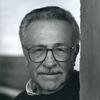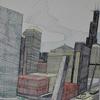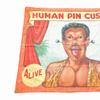'Reflections on Unity' Sculpture at Asheville Art Museum Offers Hope After Damage
- June 03, 2020 14:38
'Let us all hope that we can come together' - artist Henry Richardson
The Asheville Art Museum was hit with graffiti on June 1 after a weekend of peaceful protests morphed into a destructive night in the western North Carolina city of Asheville.
A hub for 20th- and 21st-century American art, the museum reopened to the public last November after a $24+ million expansion that adds 70 percent more gallery space. In the early hours of Monday, the recently-revamped museum exterior and artwork showcased in an outdoor plaza were targeted with spray paint. Security footage shows the activity took place between 11:30pm and 12:30am.
"We have spent the day removing graffiti from Henry Richardson’s sculpture on the plaza, Reflections on Unity," said Pamela L. Myers, Executive Director, in a statement. "We were successful, and you will be pleased to see the work in excellent condition when you return downtown."
Last year, Reflections on Unity was installed in front of the museum, just a stone's throw from the controversial Confederate Vance Monument. The piece rests on a massive stone boulder (quarried from the same stone as the Vance Monument) that was spray painted with messages of rage and frustration, similarly to the Vance Monument.
Richardson's glass orb sculpture, which speaks of hope, healing, unity, and light, has become a beloved community fixture. "Although glass windows were smashed, the anger was not directed at the glass orb itself," the artist notes. "Let us all hope we can come together, bond together, and impact society in a fundamental way."
Additional spray paint on the historic North Wing’s marble and the West Wing’s glass wall at the museum will be attended by conservators.
Myers added, "We support the message of the protesters. We firmly believe that free speech is essential. Artists often create work that helps us address hard issues and to understand one another in new ways. The Museum provides opportunities for important dialogue prompted by their endeavors. Richardson’s work, and others on view in our Many Become One exhibition, were chosen to allow us to engage with each other in just such conversations."





















